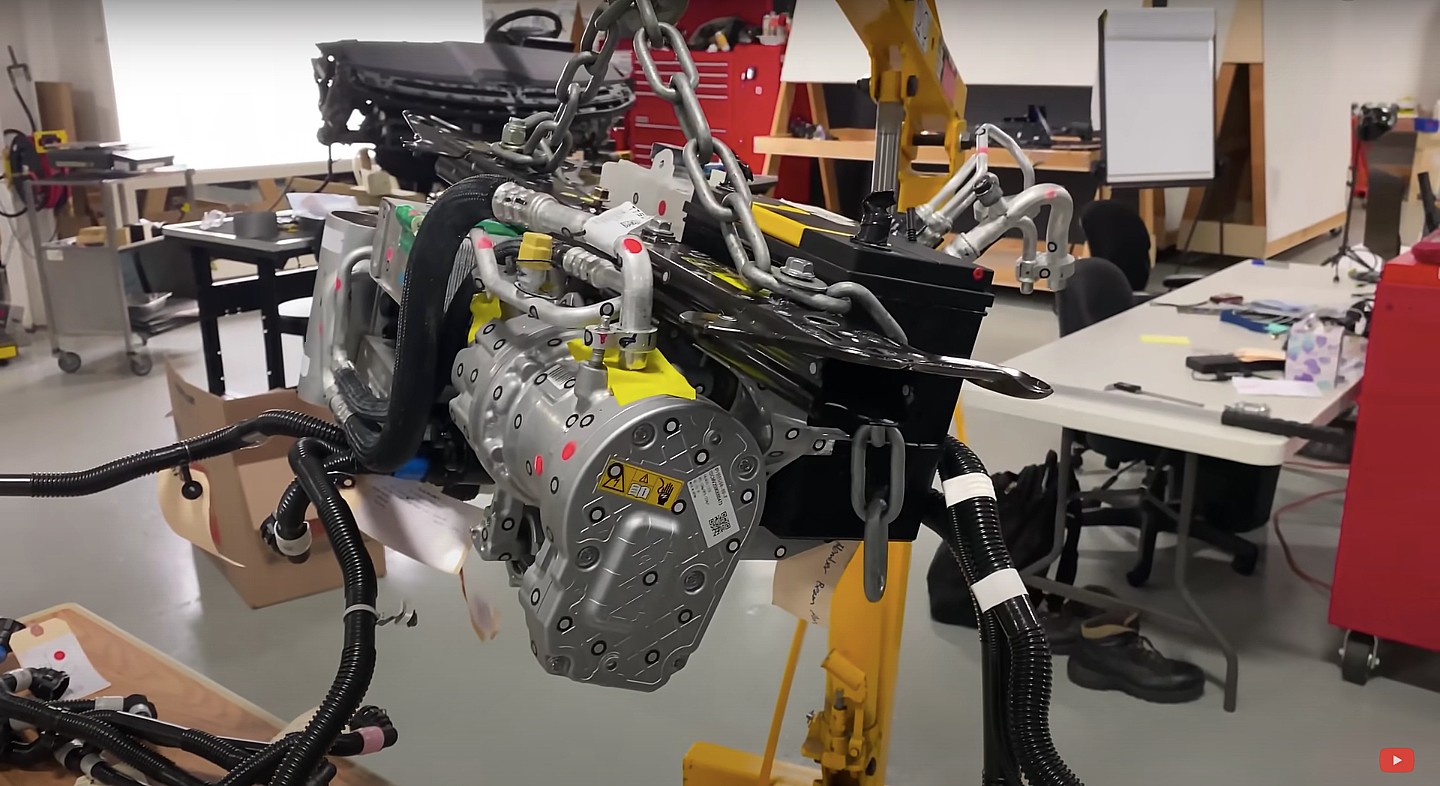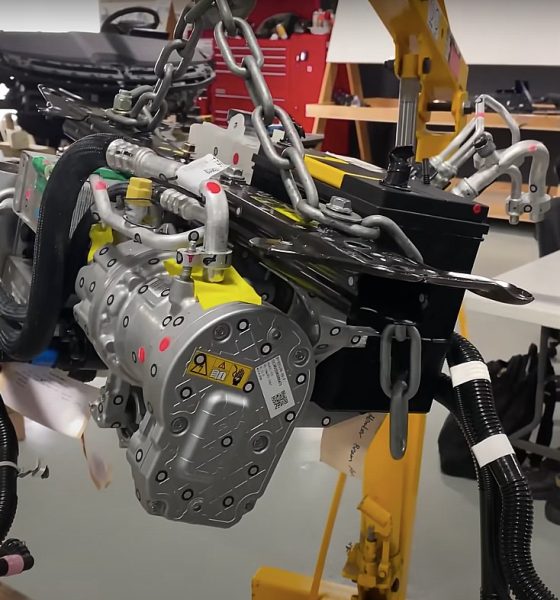

News
Tesla’s sustainability focus is evident down to the Model Y’s thermal system
It is no secret that Tesla’s main focus revolves around sustainability. Its mission is to accelerate the advent of sustainable energy, which is one of the reasons why every vehicle the company releases is designed to be a preferable alternative to cars powered by the internal combustion engine. This point became especially evident recently when the Model Y’s thermal system was compared side-by-side to that of the Ford Mustang Mach-E.
As discussed by automotive teardown expert Sandy Munro in his Munro Live YouTube channel, the Tesla Model Y’s thermal system is quite a feat in first-principles thinking and engineering. This could be seen in custom-designed components such as the Octovalve, as well as the hoses that Tesla used for the system. Munro noted that overall, the Model Y’s thermal system only uses 10 hoses with a total length of 6.35 meters, which is very conservative compared to other electric vehicles in the market.
Munro and Associates is currently in the process of tearing down the Ford Mustang Mach-E, and one of the things that caught the team’s attention was the all-electric crossover’s thermal system, which the automotive veteran candidly dubbed as a “nightmare.” This “nightmare” was represented by the lengthy, twisted cacophony of hoses that Ford used for its all-electric crossover’s thermal system. Compared to the Model Y, the Mach-E uses 250% more parts, which likely makes the vehicle more costly to build.
The teardown team found that the Mustang Mach-E’s thermal system had a total part count of 35 pieces, and the total length of its hoses stood at 18.42 meters, over two times longer than the hoses used in the Model Y. The fluids in the Model Y are significantly less than those used in the Mustang Mach-E as well, though they essentially play the same role.
As noted by members of the electric vehicle community who are familiar with thermal systems, the Mach-E also uses conventional rubber coolant hoses, which are generally heavy and not easy to recycle. These rubber hoses are very cheap, however, despite the fact that they require a lot of energy to manufacture. In contrast, Tesla appears to be using nylon materials for the Model Y’s tubing, which is more recyclable and more energy efficient to produce. Nylon tubing is significantly lighter than the rubber hoses used in the Mach-E, but it is several times more expensive.
Munro and Associates only showed a glimpse of the engineering prowess displayed by Tesla team when it designed the Model Y, but one thing was immediately evident when the all-electric crossover’s thermal system was compared to the Mach-E. The Tesla Model Y is created from the ground up to be a vehicle that’s designed for a renewable future, and its components seem to have been selected with sustainability in mind. The Model Y’s nylon hoses, which are more expensive but more sustainable, seem to be part of this strategy.
Tesla’s experience in building electric vehicles is evident in the Model Y’s components. Veterans like Ford, on the other hand, seem to still be learning the ropes. But this is not the most thought-provoking conclusion from Munro’s comparison of the Model Y and Mach-E’s thermal system. While the Tesla is miles ahead, Munro emphasized that the Ford Mustang Mach-E is already the best non-Tesla electric car that they have torn down and analyzed to date.
Watch Munro’s comparison of the Tesla Model Y and Ford Mustang Mach-E’s thermal system below.
Don’t hesitate to contact us with news tips. Just send a message to tips@teslarati.com to give us a heads up.

News
Tesla FSD fleet is nearing 7 billion total miles, including 2.5 billion city miles
As can be seen on Tesla’s official FSD webpage, vehicles equipped with the system have now navigated over 6.99 billion miles.

Tesla’s Full Self-Driving (Supervised) fleet is closing in on almost 7 billion total miles driven, as per data posted by the company on its official FSD webpage.
These figures hint at the massive scale of data fueling Tesla’s rapid FSD improvements, which have been quite notable as of late.
FSD mileage milestones
As can be seen on Tesla’s official FSD webpage, vehicles equipped with the system have now navigated over 6.99 billion miles. Tesla owner and avid FSD tester Whole Mars Catalog also shared a screenshot indicating that from the nearly 7 billion miles traveled by the FSD fleet, more than 2.5 billion miles were driven inside cities.
City miles are particularly valuable for complex urban scenarios like unprotected turns, pedestrian interactions, and traffic lights. This is also the difference-maker for FSD, as only complex solutions, such as Waymo’s self-driving taxis, operate similarly on inner-city streets. And even then, incidents such as the San Francisco blackouts have proven challenging for sensor-rich vehicles like Waymos.
Tesla’s data edge
Tesla has a number of advantages in the autonomous vehicle sector, one of which is the size of its fleet and the number of vehicles training FSD on real-world roads. Tesla’s nearly 7 billion FSD miles then allow the company to roll out updates that make its vehicles behave like they are being driven by experienced drivers, even if they are operating on their own.
So notable are Tesla’s improvements to FSD that NVIDIA Director of Robotics Jim Fan, after experiencing FSD v14, noted that the system is the first AI that passes what he described as a “Physical Turing Test.”
“Despite knowing exactly how robot learning works, I still find it magical watching the steering wheel turn by itself. First it feels surreal, next it becomes routine. Then, like the smartphone, taking it away actively hurts. This is how humanity gets rewired and glued to god-like technologies,” Fan wrote in a post on X.
News
Tesla starts showing how FSD will change lives in Europe
Local officials tested the system on narrow country roads and were impressed by FSD’s smooth, human-like driving, with some calling the service a game-changer for everyday life in areas that are far from urban centers.

Tesla has launched Europe’s first public shuttle service using Full Self-Driving (Supervised) in the rural Eifelkreis Bitburg-Prüm region of Germany, demonstrating how the technology can restore independence and mobility for people who struggle with limited transport options.
Local officials tested the system on narrow country roads and were impressed by FSD’s smooth, human-like driving, with some calling the service a game-changer for everyday life in areas that are far from urban centers.
Officials see real impact on rural residents
Arzfeld Mayor Johannes Kuhl and District Administrator Andreas Kruppert personally tested the Tesla shuttle service. This allowed them to see just how well FSD navigated winding lanes and rural roads confidently. Kruppert said, “Autonomous driving sounds like science fiction to many, but we simply see here that it works totally well in rural regions too.” Kuhl, for his part, also noted that FSD “feels like a very experienced driver.”
The pilot complements the area’s “Citizen Bus” program, which provides on-demand rides for elderly residents who can no longer drive themselves. Tesla Europe shared a video of a demonstration of the service, highlighting how FSD gives people their freedom back, even in places where public transport is not as prevalent.
What the Ministry for Economic Affairs and Transport says
Rhineland-Palatinate’s Minister Daniela Schmitt supported the project, praising the collaboration that made this “first of its kind in Europe” possible. As per the ministry, the rural rollout for the service shows FSD’s potential beyond major cities, and it delivers tangible benefits like grocery runs, doctor visits, and social connections for isolated residents.
“Reliable and flexible mobility is especially vital in rural areas. With the launch of a shuttle service using self-driving vehicles (FSD supervised) by Tesla in the Eifelkreis Bitburg-Prüm, an innovative pilot project is now getting underway that complements local community bus services. It is the first project of its kind in Europe.
“The result is a real gain for rural mobility: greater accessibility, more flexibility and tangible benefits for everyday life. A strong signal for innovation, cooperation and future-oriented mobility beyond urban centers,” the ministry wrote in a LinkedIn post.
News
Tesla China quietly posts Robotaxi-related job listing
Tesla China is currently seeking a Low Voltage Electrical Engineer to work on circuit board design for the company’s autonomous vehicles.

Tesla has posted a new job listing in Shanghai explicitly tied to its Robotaxi program, fueling speculation that the company is preparing to launch its dedicated autonomous ride-hailing service in China.
As noted in the listing, Tesla China is currently seeking a Low Voltage Electrical Engineer to work on circuit board design for the company’s autonomous vehicles.
Robotaxi-specific role
The listing, which was shared on social media platform X by industry watcher @tslaming, suggested that Tesla China is looking to fill the role urgently. The job listing itself specifically mentions that the person hired for the role will be working on the Low Voltage Hardware team, which would design the circuit boards that would serve as the nervous system of the Robotaxi.
Key tasks for the role, as indicated in the job listing, include collaboration with PCB layout, firmware, mechanical, program management, and validation teams, among other responsibilities. The role is based in Shanghai.
China Robotaxi launch
China represents a massive potential market for robotaxis, with its dense urban centers and supportive policies in select cities. Tesla has limited permission to roll out FSD in the country, though despite this, its vehicles have been hailed as among the best in the market when it comes to autonomous features. So far, at least, it appears that China supports Tesla’s FSD and Robotaxi rollout.
This was hinted at in November, when Tesla brought the Cybercab to the 8th China International Import Expo (CIIE) in Shanghai, marking the first time that the autonomous two-seater was brought to the Asia-Pacific region. The vehicle, despite not having a release date in China, received a significant amount of interest among the event’s attendees.








